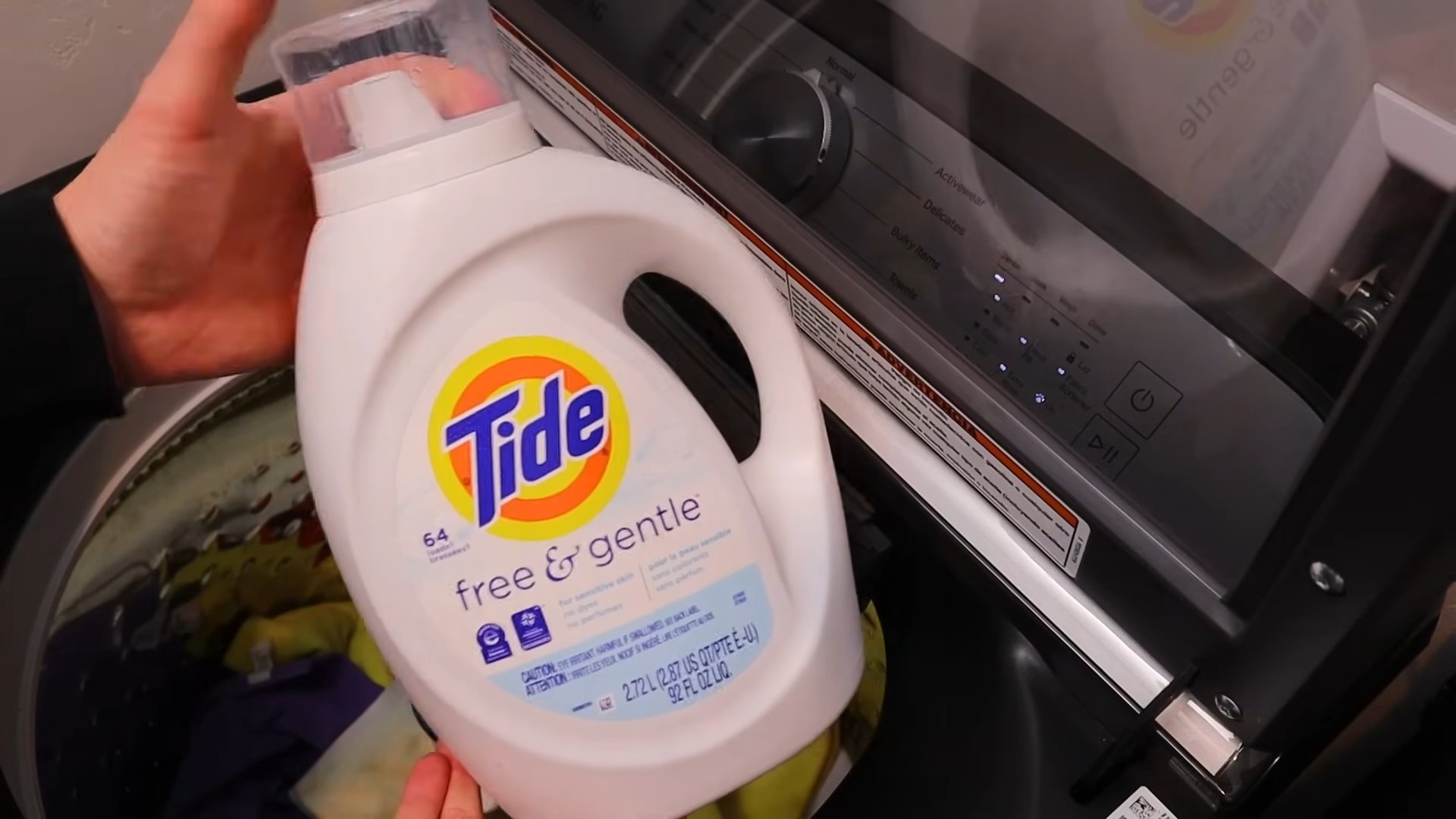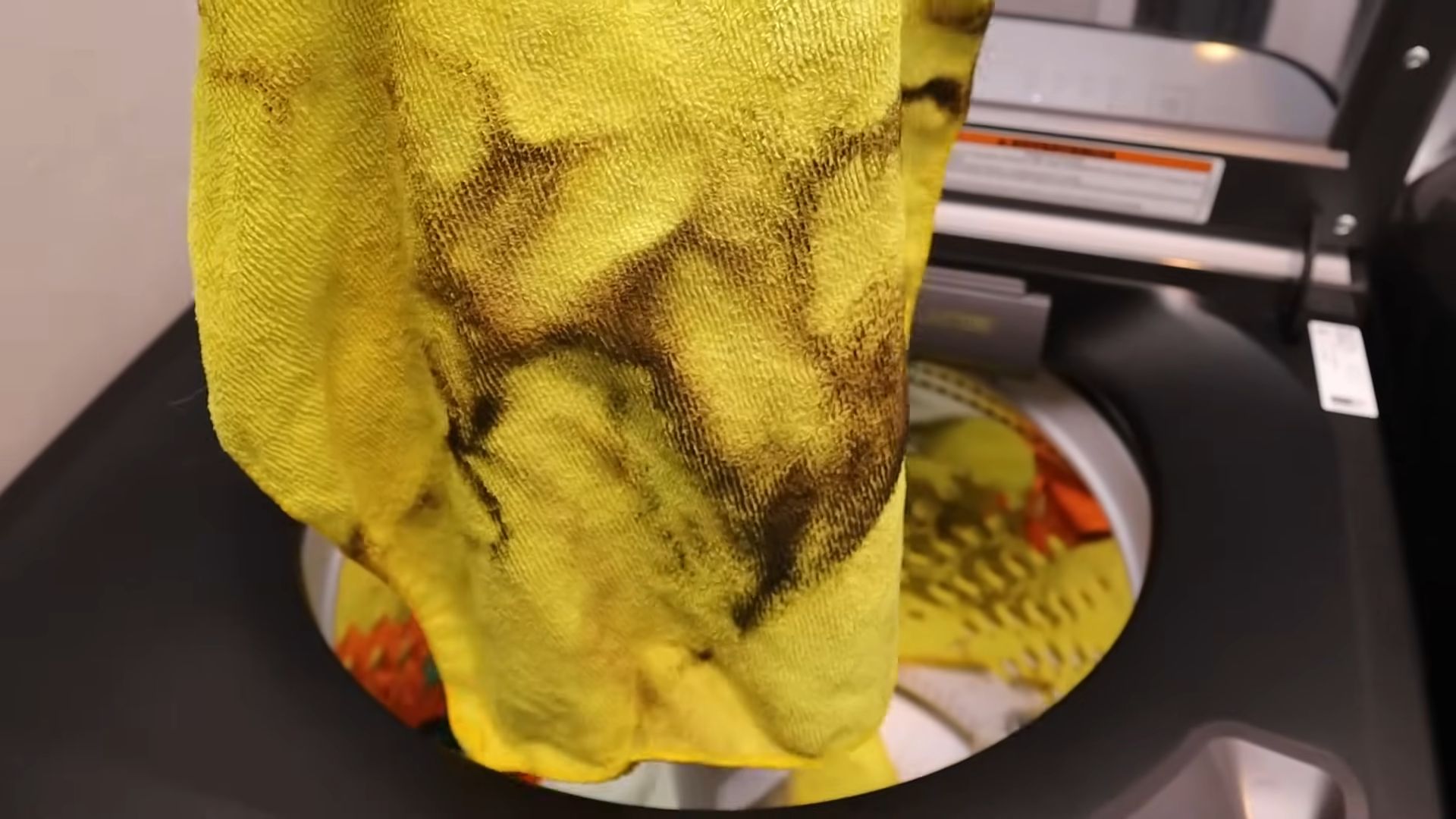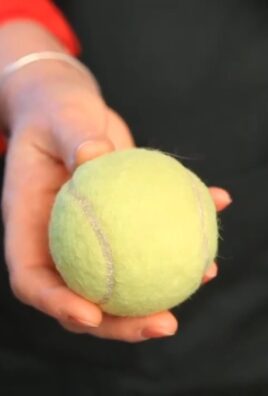Wash Microfiber Cloths Properly – are you tired of your microfiber cloths losing their magic touch after just a few washes? I know I was! These little cleaning powerhouses are fantastic for everything from dusting to detailing your car, but if you’re not washing them correctly, you’re essentially throwing money down the drain.
Microfiber cloths have become increasingly popular in recent years, but their effectiveness hinges on maintaining their unique structure. Unlike traditional cotton cloths, microfiber is designed with incredibly fine fibers that trap dirt and grime. However, improper washing can clog these fibers, rendering them useless. Think of it like this: you wouldn’t wash your delicate silk scarf with harsh chemicals, would you? The same principle applies here.
Learning how to wash microfiber cloths properly isn’t just about saving money; it’s about maximizing their cleaning potential and extending their lifespan. In this DIY guide, I’ll share my tried-and-true methods for keeping your microfiber cloths in tip-top shape, ensuring they continue to deliver streak-free shine and superior cleaning power for years to come. So, ditch the guesswork and let’s dive into the secrets of microfiber cloth care!

How to Wash Microfiber Cloths the Right Way (and Keep Them Super Absorbent!)
Okay, so you’ve invested in some amazing microfiber cloths. They’re fantastic for cleaning, dusting, and detailing your car. But if you’re like me, you’ve probably noticed they sometimes lose their magic after a few washes. They become less absorbent, start smearing instead of cleaning, and just generally aren’t as effective. Don’t worry, you’re not alone! The secret to keeping your microfiber cloths in tip-top shape is all in the washing process. I’m going to walk you through everything I’ve learned about washing microfiber cloths properly, so you can keep them working like new for years to come.
Understanding Microfiber: Why Special Care is Needed
Before we dive into the washing process, let’s quickly understand why microfiber cloths need special care. Microfiber is made of incredibly fine synthetic fibers (usually polyester and polyamide) that are split to create a huge surface area. This is what makes them so absorbent and effective at picking up dirt and grime. However, this also means they’re prone to trapping lint, attracting oils, and getting damaged by harsh chemicals.
* The Enemy: Lint and Oils: Microfiber loves to grab onto lint from other fabrics. Washing them with cotton towels is a big no-no! Oils from cleaning products or even your skin can also clog the fibers, reducing their absorbency.
* Heat Sensitivity: High heat can melt or damage the delicate fibers, making them less effective.
* Chemical Sensitivity: Harsh chemicals like bleach and fabric softeners can also damage the fibers and leave residue that reduces absorbency.
Sorting and Prepping Your Microfiber Cloths
Before you even think about tossing your microfiber cloths into the washing machine, it’s important to sort them properly. This will prevent cross-contamination and ensure the best possible cleaning results.
* Separate by Use: This is crucial! Keep cloths used for different tasks separate. For example, cloths used for cleaning bathrooms should be washed separately from cloths used for polishing furniture. I even have separate bags for cloths used on my car.
* Heavily Soiled Cloths: If you have cloths that are heavily soiled with grease, oil, or other stubborn substances, pre-treat them before washing.
* Remove Loose Debris: Give each cloth a good shake to remove any loose dirt, crumbs, or debris. You can also use a lint roller to remove any stubborn particles.
The Washing Process: Step-by-Step Guide
Now for the main event! Here’s my tried-and-true method for washing microfiber cloths:
1. Choose the Right Detergent: This is super important. Avoid detergents with dyes, perfumes, or fabric softeners. These additives can leave residue on the fibers and reduce their absorbency. I personally recommend using a dedicated microfiber detergent, which is specially formulated to clean microfiber without damaging it. If you don’t have microfiber detergent, a clear, unscented laundry detergent is a good alternative. Use a small amount – about half the recommended amount for a normal load.
2. Load the Washing Machine: Load your microfiber cloths into the washing machine. Avoid overloading the machine, as this can prevent the cloths from getting properly cleaned. It’s best to wash them in a small to medium-sized load.
3. Select the Right Wash Cycle: Choose a gentle or delicate cycle with cold or warm water. Hot water can damage the fibers. I usually opt for cold water to be extra safe.
4. Add White Vinegar (Optional): This is my secret weapon! Adding about 1/4 cup of white vinegar to the wash cycle can help remove any lingering odors and residue. It also acts as a natural fabric softener without leaving any harmful buildup.
5. Run the Wash Cycle: Let the washing machine do its thing! Once the cycle is complete, remove the cloths promptly.
Drying Your Microfiber Cloths: The Final Touch
The drying process is just as important as the washing process. Improper drying can ruin all your hard work.
1. Shake Out the Cloths: Before drying, give each cloth a good shake to fluff the fibers and remove any wrinkles.
2. Air Drying (Recommended): The best way to dry microfiber cloths is to air dry them. Hang them on a clothesline or drying rack in a well-ventilated area. This prevents heat damage and helps them retain their absorbency.
3. Tumble Drying (If Necessary): If you need to tumble dry your microfiber cloths, use the lowest heat setting possible. High heat can melt or damage the fibers. I also recommend using a mesh laundry bag to protect the cloths from snagging on other items in the dryer.
4. Avoid Dryer Sheets: Dryer sheets contain fabric softeners that can leave a residue on the fibers and reduce their absorbency. Skip the dryer sheets altogether.
Dealing with Stubborn Stains and Odors
Sometimes, your microfiber cloths might have stubborn stains or odors that require a little extra attention. Here’s how I tackle those issues:
* Pre-Treating Stains: For tough stains, pre-treat the cloths with a stain remover specifically designed for microfiber. Follow the instructions on the stain remover label. You can also try soaking the cloths in a solution of warm water and a small amount of detergent before washing.
* Removing Odors: If your microfiber cloths have a lingering odor, try soaking them in a solution of warm water and baking soda for a few hours before washing. You can also add a few drops of essential oil (like tea tree or lavender) to the wash cycle for a fresh scent.
Storage Tips to Keep Your Microfiber Cloths Clean
Proper storage is essential for keeping your microfiber cloths clean and ready to use.
* Store in a Clean, Dry Place: Store your clean microfiber cloths in a clean, dry place away from dust, dirt, and other contaminants. I like to store mine in a sealed plastic container or a drawer.
* Avoid Contact with Other Fabrics: Keep your microfiber cloths separate from other fabrics, especially cotton towels, to prevent lint contamination.
* Replace Worn-Out Cloths: Even with proper care, microfiber cloths will eventually wear out. Replace them when they start to lose their absorbency or become damaged.
Extra Tips and Tricks for Microfiber Cloth Care
Here are a few extra tips and tricks I’ve learned over the years:
* Wash New Cloths Before Use: Always wash new microfiber cloths before using them for the first time. This will remove any manufacturing residue and improve their absorbency.
* Don’t Overuse Cleaning Products: Using too much cleaning product can leave residue on the fibers and reduce their effectiveness. Use just enough to get the job done.
* Rinse Frequently: When using microfiber cloths for cleaning, rinse them frequently in clean water to remove dirt and grime. This will prevent the dirt from being spread around.
* Invest in Quality Cloths: Not all microfiber cloths are created equal. Invest in high-quality cloths from reputable brands for the best results.
By following these tips and tricks, you can keep your microfiber cloths clean, absorbent, and working like new for years to come. Happy cleaning!

Conclusion
So, there you have it! Mastering the art of washing microfiber cloths properly isn’t just about cleanliness; it’s about extending the life of your cleaning arsenal and ensuring optimal performance every single time you reach for one. Think of it as an investment in your cleaning routine, saving you money in the long run by preventing premature wear and tear.
Why is this DIY trick a must-try? Because improperly cleaned microfiber cloths become breeding grounds for bacteria and lose their effectiveness. They start smearing instead of cleaning, scratching delicate surfaces, and generally making your cleaning efforts harder, not easier. By following these simple steps, you’ll restore your cloths to their original glory, ready to tackle any cleaning challenge.
But don’t stop there! Feel free to experiment with variations. For heavily soiled cloths, consider adding a tablespoon of borax to your washing machine for an extra boost of cleaning power. If you’re sensitive to scents, opt for an unscented detergent or add a few drops of your favorite essential oil (like lemon or tea tree) to the rinse cycle for a subtle, natural fragrance. Another variation is to pre-soak heavily soiled cloths in a solution of warm water and baking soda before washing. This can help loosen stubborn dirt and grime.
The key takeaway is to avoid fabric softeners and high heat, as these can permanently damage the fibers and reduce their absorbency. Remember, microfiber cloths are an investment, and treating them right will pay dividends in the long run.
We’re confident that once you try this method for washing microfiber cloths properly, you’ll notice a significant difference in their performance and longevity. No more streaky windows, no more smeared surfaces, just sparkling clean results every time.
Now it’s your turn! Give this DIY trick a try and see the difference for yourself. We’re eager to hear about your experiences. Did you find a particular variation that worked exceptionally well for you? Did you discover any other helpful tips along the way? Share your thoughts and insights in the comments below. Let’s build a community of clean-conscious individuals who are passionate about keeping their homes sparkling and their microfiber cloths in top condition. Your feedback will not only help others but also contribute to refining this method even further. So, go ahead, wash those cloths, and let us know what you think! We can’t wait to hear from you.
Frequently Asked Questions (FAQs)
Why is it so important to wash microfiber cloths differently than regular cloths?
Microfiber cloths are made of incredibly fine synthetic fibers, typically a blend of polyester and polyamide. These fibers create a large surface area, making them highly absorbent and effective at trapping dirt, dust, and grime. However, this unique structure also makes them susceptible to damage from certain laundry practices. Regular detergents often contain additives like fabric softeners and fragrances that can clog the fibers, reducing their absorbency and cleaning power. High heat can also melt or damage the delicate fibers, rendering them less effective. Therefore, washing microfiber cloths properly requires a gentler approach to preserve their unique properties and ensure optimal performance.
Can I wash microfiber cloths with other types of laundry?
It’s generally best to wash microfiber cloths separately from other types of laundry, especially cotton items. Microfiber cloths are designed to attract and trap lint and debris. If washed with cotton towels or other lint-producing fabrics, they will likely pick up a significant amount of lint, which can be difficult to remove and will diminish their cleaning effectiveness. Washing them separately prevents this cross-contamination and keeps your microfiber cloths in optimal condition. If you absolutely must wash them with other items, choose similar synthetic fabrics and ensure everything is lint-free before starting the wash.
What type of detergent is best for washing microfiber cloths?
The ideal detergent for washing microfiber cloths is a mild, liquid detergent that is free of dyes, perfumes, and fabric softeners. Look for detergents specifically labeled as “free and clear” or “gentle.” Powdered detergents can sometimes leave residue on the fibers, so liquid detergents are generally preferred. Avoid using detergents that contain bleach, as bleach can damage the fibers and reduce their absorbency. A small amount of detergent is usually sufficient; using too much can leave a residue that is difficult to rinse out.
How often should I wash my microfiber cloths?
The frequency of washing microfiber cloths depends on how often they are used and the types of surfaces they are used to clean. For general cleaning tasks, such as dusting or wiping down counters, washing after each use is recommended to prevent the buildup of dirt and bacteria. For heavier cleaning tasks, such as cleaning floors or bathrooms, washing immediately after use is essential. If you’re using microfiber cloths for detailing cars, wash them after each section to avoid transferring dirt and scratches to the paint. As a general rule, if a microfiber cloth appears visibly dirty or has a noticeable odor, it’s time to wash it.
What temperature should I use to wash microfiber cloths?
Wash microfiber cloths in warm or cold water. Hot water can damage the fibers and cause them to shrink or lose their shape. Warm water is generally effective for removing dirt and grime, while cold water is a good option for lightly soiled cloths or for preserving colors. Always check the care label on your microfiber cloths for specific temperature recommendations.
Can I put microfiber cloths in the dryer?
It’s best to air dry microfiber cloths whenever possible. If you must use a dryer, use the lowest heat setting possible. High heat can melt or damage the fibers, reducing their absorbency and cleaning power. Avoid using dryer sheets, as they contain fabric softeners that can clog the fibers. If you choose to air dry, hang the cloths in a well-ventilated area or lay them flat on a clean surface.
How do I remove stubborn stains from microfiber cloths?
For stubborn stains, pre-treating the cloths before washing can be helpful. You can try soaking the cloths in a solution of warm water and baking soda for a few hours or overnight. Alternatively, you can apply a small amount of stain remover directly to the stain and let it sit for a few minutes before washing. Avoid using harsh chemicals or abrasive cleaners, as these can damage the fibers. For grease stains, try using a degreasing dish soap.
My microfiber cloths have lost their absorbency. Can I restore them?
Yes, it’s often possible to restore the absorbency of microfiber cloths that have become clogged with detergent or fabric softener residue. Try washing the cloths in hot water (if the care label allows) with a cup of white vinegar. The vinegar will help to dissolve the residue and restore the fibers’ ability to absorb. You may need to repeat this process a few times to fully restore the absorbency. After washing with vinegar, be sure to rinse the cloths thoroughly to remove any lingering vinegar odor.
How do I store microfiber cloths properly?
Store microfiber cloths in a clean, dry place. Avoid storing them in areas where they can be exposed to dust, dirt, or moisture. You can fold them neatly and store them in a drawer or cabinet, or hang them on hooks. If you’re storing them in a container, make sure the container is clean and dry. Avoid storing them with other cleaning supplies that may contain harsh chemicals or strong odors.
Can I iron microfiber cloths?
It is generally not recommended to iron microfiber cloths. The high heat from an iron can melt or damage the delicate fibers, reducing their absorbency and cleaning power. If you must iron them, use the lowest heat setting possible and place a thin cloth between the iron and the microfiber cloth to protect the fibers. However, it’s best to avoid ironing them altogether.





Leave a Comment